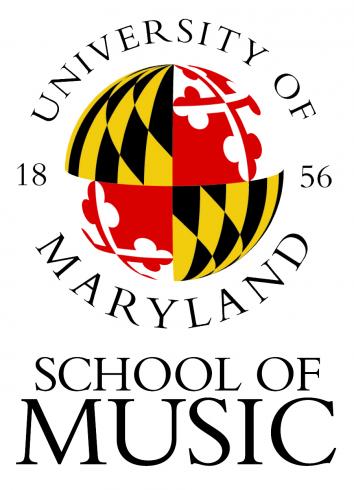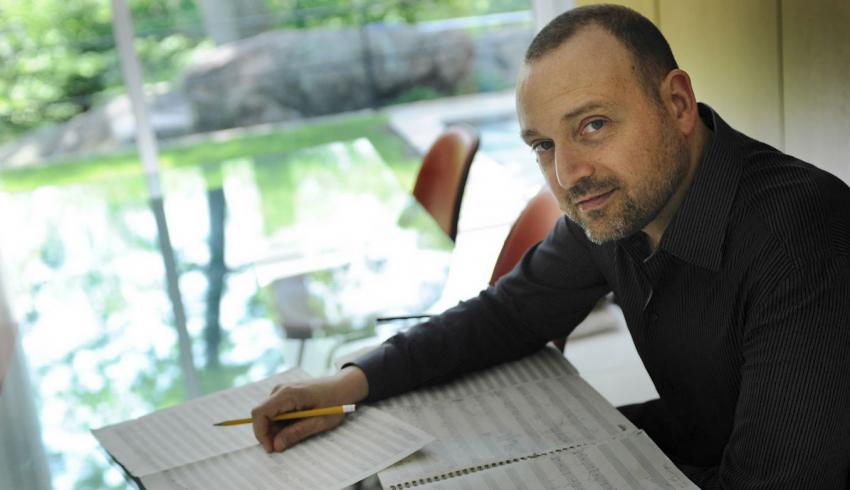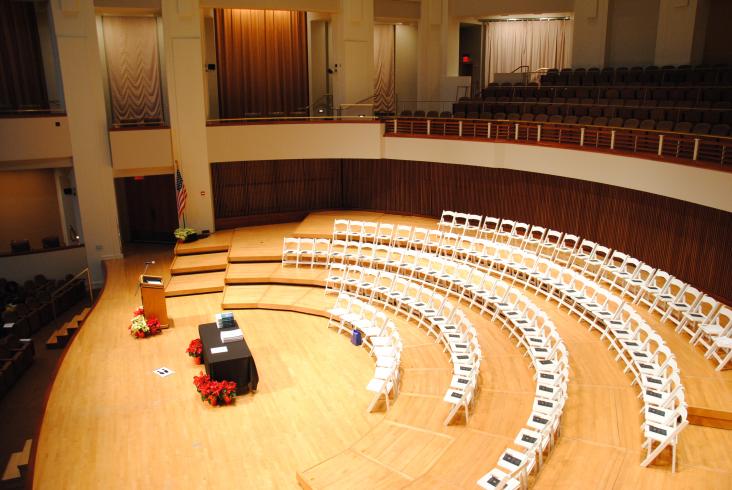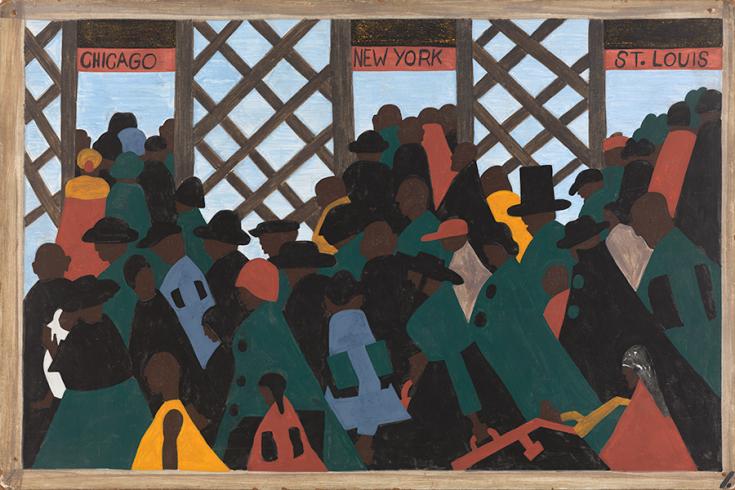University of Maryland and Derek Bermel at Dekelboum Concert Hall
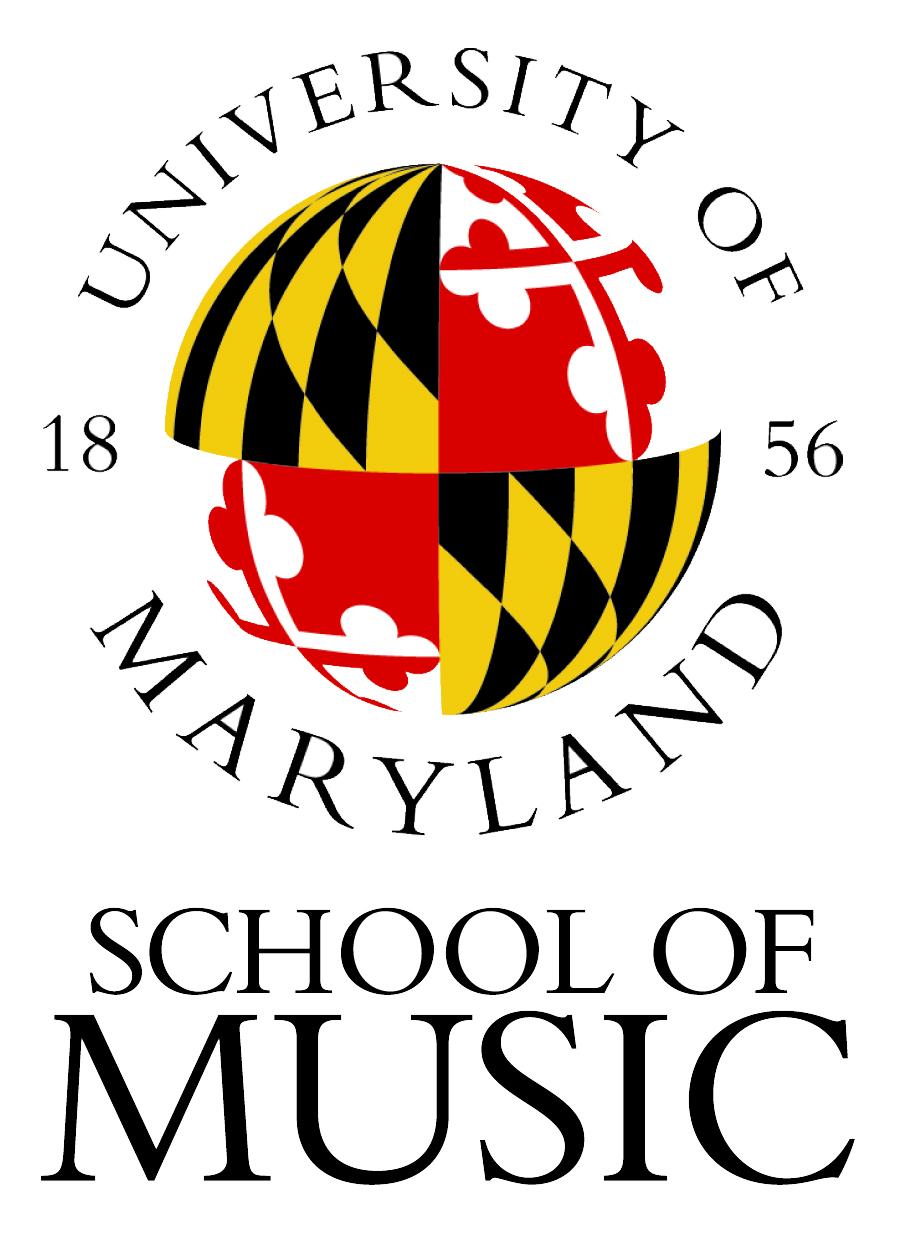
The UMD School of Music Symphony Orchestra performs Derek Bermel’s Migration Series, joined onstage by UMD’s Jazz Band, Chamber Singers, and Wind Orchestra.
Program
PROGRAM:
DEREK BERMEL (b. 1967)
Migration Series (2006)
I. Landscapes
interlude I
II. After a Lynching
interlude II
III. A Rumor
IV. Riots and Moon’s Shine
interlude III
V. Still Arriving
BILLY STRAYHORN (1915-1967)
Take the A Train (1939)
JOHN HARBISON (b. 1938)
The Flight into Egypt (1986)
About the Artists
Grammy-nominated composer and clarinetist Derek Bermel has been widely hailed for his creativity, theatricality, and virtuosity. Artistic Director of the American Composers Orchestra at Carnegie Hall, Bermel is also Director of Copland House’s emerging composers institute Cultivate, served as Composer-in-Residence at the Mannes College of Music, and enjoyed a four-year tenure as artist-in-residence at the Institute for Advanced Study (IAS) in Princeton. Bermel has become recognized as a dynamic and unconventional curator of concert series that spotlight the composer as performer. Alongside his international studies of ethnomusicology and orchestration, an ongoing engagement with other musical cultures has become part of the fabric and force of his compositional language, in which the human voice and its myriad inflections play a primary role.
He has received commissions from the Pittsburgh, National, Saint Louis, and Pacific Symphonies, Los Angeles Philharmonic, Chamber Music Society of Lincoln Center, WNYC Radio, La Jolla Music Society, Seattle Chamber Music Festival, eighth blackbird, Guarneri String Quartet, Music from Copland House and Music from China, De Ereprijs (Netherlands), violinist Midori, and electric guitarist Wiek Hijmans among others. The Boston Globe wrote, “There doesn’t seem to be anything that Bermel can’t do with the clarinet.” His many honors include the Alpert Award in the Arts, Rome Prize, Guggenheim and Fulbright Fellowships, American Music Center’s Trailblazer Award, and an Academy Award from the American Academy of Arts and Letters; commissions from the Koussevitzky and Fromm Foundations, Meet the Composer, and Cary Trust; and residencies at Yaddo, Tanglewood, Aspen, Banff, Bellagio, Copland House, Sacatar, and Civitella Ranieri.
His discography features three critically-acclaimed discs: an all-Bermel orchestral recording that includes the Grammy-nominated performance of his clarinet concerto Voices, (BMOP/sound); Soul Garden, his small ensemble/solo music (New World/CRI); and his most recent disc, Canzonas Americanas, with Alarm Will Sound (Cantaloupe). Bermel recently made his Cabrillo Festival debut, conducting his Dust Dances, and served as composer-in-residence at the Bowdoin Festival. Recent and upcoming are appearances or premieres include the Intimacy of Creativity Festival in Hong-Kong; the Seattle Chamber Music Festival; Hyllos, his evening-length collaboration with The Veenfabriek and Asko | Schönberg Ensemble, which premiered the Netherlands; performances and recordings with the JACK quartet and Music from Copland House ensemble; and as soloist with the New Century Chamber Orchestra.
The University of Maryland Symphony Orchestra (UMSO) is one of the nation’s finest collegiate orchestras, providing its members with the tools they need to enter the evolving world of music as inventive and engaged proponents for their art. All wind, brass and percussion players rotate between UMSO and the UMD Wind Orchestra every four-week concert period. With these shifts, the musicians learn to quickly adapt to a variety of musical situations.
Known for its cutting-edge performances, UMSO searches for new ways to vitalize the presentation classical music in concert. Coined “The New Lights Initiative,” this progressive approach uncovers a renewed depth of meaning in the traditional orchestral repertoire for both musicians and audiences alike. Recent interdisciplinary performances and collaborations include:
The Petrushka Project (2008): UMSO collaborated with designer Doug Fitch in a multi-dimensional setting of Stravinsky’s Petrushka. The performance used puppetry, live videography, choreography of the orchestra itself and costumes to evoke a Russian street fair in wintertime. The Petrushka Project was adapted for the New York Philharmonic, and received its debut at Lincoln Center on the Philharmonic’s final concert of the 2012-2013 season, “A Dancer’s Dream.”
The University of Maryland Wind Orchestra (UMWO) was founded in 2008 to give advanced undergraduate, MM and DMA performance students the opportunity to participate in a professional caliber ensemble with the intent of furthering their preparation as professional orchestra and chamber music performers. All wind, brass and percussion players rotate between UMWO and the UMD Symphony Orchestra every four-week concert period. With these shifts, the musicians learn to quickly adapt to a variety of musical situations.
During its five-year history, UMWO has performed in side-by-side collaborations with major professional ensembles such as the Baltimore Symphony Orchestra, the Orpheus Chamber Orchestra, eighth blackbird and the Imani Winds.
UMWO actively expands repertoire possibilities by embracing the notion that the modern wind ensemble includes more than just wind players; string, keyboard and vocal performers are regularly incorporated into concerts. Concurrently, UMWO performs staples of the wind ensemble canon. With both contemporary and traditional repertoire on a single concert, UMWO forges connections between seemingly dissimilar works, giving both its musicians and audience a new perspective on what a wind ensemble can be.
The University of Maryland jazz ensembles perform representative music from the traditional jazz repertoire, as well as new compositions and arrangements from UMD students and faculty. Over one hundred students perform in the various UMD jazz bands. The Jazz Ensemble is one of only three elite bands invited to perform annually at the UDC Calvin Jones Big Band Jazz Festival, one of the most anticipated events on Washington D.C.’s jazz calendar and frequently broadcast on the BET Network. Combos and big bands also perform outreach concerts at regional schools and venues such as the National Archives, D.C. Public Library, and National Building Museum, area schools, and at campus events such as Maryland Day, Gala Events, and commencement activities.
The University of Maryland Chamber Singers have achieved international renown with acclaimed performances of the most challenging repertoire ranging from the 16th through the 21st centuries. The ensemble made its first European tour in 2007 with a prize-winning appearance at the International Musical Eisteddfod in Wales. In 2011 they won Premier Prix for Mixed Choirs and the Prix Ronsard for Renaissance Singing at the 40th Florilège Vocal de Tours in France. They also appeared by invitation of the International Federation for Choral Music at the 10th World Symposium on Choral Music in South Korea.
The UMD Chamber Singers collaborate frequently with the National Symphony Orchestra in major works such as Bach’s Mass in B minor and will return to the Kennedy Center in December 2015 for Handel’s Messiah. Along with their regular symphonic collaborations, the ensemble specializes in the most important a cappella repertoire of the 20th century, having presented the masterpieces of Barber, Britten, Copland, Debussy, Howells, Poulenc, and Schönberg.
In addition to regularly singing under founding director Edward Maclary, the UMD Chamber Singers work with internationally renowned conductors such as Christoph Eschenbach, Helmuth Rilling, Rinaldo Alessandrini, and Iván Fischer. The group frequently appears by invitation at conferences of the American Choral Directors Association and National Collegiate Choral Organization (NCCO). Most recently the UMD Chamber Singers appeared as the featured ensemble of the 2013 NCCO conference in a highly acclaimed concert of music by Poulenc and Britten led by Matthew Halls, Artistic Director of the Oregon Bach Festival.
Notes
Note by Derek Bermel
Derek Bermel, The Migration Series (2006)
The Migration Series is a concerto for jazz band and orchestra,influenced by many of my compositional heroes, including Charlie Parker, Stevie Wonder, Sarah Vaughan, Eric Dolphy, Thelonious Monk, John Zorn, and the rappers Rakim and Mos Def. I kept in mind the individual voices of the members of the Lincoln Center Jazz Orchestra. The piece is in five movements, with three connecting interludes, and is dedicated to Wynton Marsalis, whose music-making has been a great inspiration to me.
It was as a child in New York that I first encountered The Migration Series, a set of 60 paintings by Jacob Lawrence (1917-2000) depicting the Great Migration of African-Americans from South to North during the early decades of the 20th Century. The paintings have remained etched in my consciousness ever since, and as I began work on this piece, many of the sounds in my head evoked memories of the series. Because Lawrence didn’t regard the paintings as separate entities, but instead as components of a larger cycle, it felt natural for me to focus on the shapes, colors, moods, and atmospheres evoked by groups of scenes within the series, rather than individual paintings. In this grand American story, I gravitated toward the larger themes, those of determination, mystery, despair, and hope; Lawrence’s unique sense of perspective and distance - his generosity and universality of narrative - allowed the space for me to add music.
The first movement is inspired by the wide open Southern landscapes and the theme of the railroad depicted in Lawrence’s paintings. The music builds on a relentless four-note ostinato in the strings which combine with a short funk riff in the trumpet. The movement builds as a slowly expanding series of diatonic chord changes evolves and the texture becomes layered in polytonality.
A short solo piano interlude leads to the more lyrical second movement; this section reflects Lawrence’s depictions of the emotional pulse prior to migration, the overwhelming disbelief and despair stemming from the prejudices and hardships endured by the former slaves and their families. The music begins as a Gospel ballad, transformed by a trio of rapping trombones which anticipate the vocalizations of the third movement.
Another interlude, this time for solo clarinet and bass, leads to the third movement; This section takes as its point of departure the conversational “call and response”, the excitement of rumors in the air and impending change captured by Lawrence in several of the paintings. This vitality is expressed rhythmically by swinging chromatic tone clusters heard in the three trombones (presaged in mvt. II), then later by four bass clarinets, four trumpets, and finally by the whole jazz band. With development of contour, rather than melody, the movement emphasizes gestures of rhythm and syncopation over pitch- i.e. the central interplay is the conversational banter (characteristic of dub or hip-hop music), rather than on the melody-chord relations typical of ‘song’ forms. Partway through the movement, echoes of the first ‘landscape’ ostinato reappear in the strings, as the chatter leads to the migratory journey.
The fourth movement follows immediately without pause. Lawrence illustrates the migrants’ arrival in the Northern cities, accompanied by joy and expectation, but also by violence, rejection, and new incarnations of poverty. The new urban energy manifests itself in the manic bebop lines of the saxophones - with the cooler serenity - in the strings and harp - recalling the depictions of a simpler, rural life in the South. A trumpet interlude leads out of the fourth movement, picks up steam as a conversation runs throughout the ensemble, into the fifth and final section, a musical and visual summation based on material presented in the earlier movements; this last section evokes the text accompanying Lawrences final painting: “And the migrants kept coming.”
Note by Thomas May
John Harbison, The Flight into Egypt (1986)
Throughout an extraordinarily prolific career, John Harbison (b. 1938 in Orange, New Jersey) has shown a gift for cross-pollinating the familiar with the new and unexpected. Works such as his Metropolitan Opera-commissioned The Great Gatsby and his song cycle The Canonical American Songbook, for example, bring new perspectives to well-known cultural icons. Harbison has formulated an artistic credo of aiming “to make each piece different from the others, to find clear, fresh large designs, to reinvent traditions.”
This is especially apparent in his take on the Christmas season in the miniature oratorio The Flight into Egypt. Harbison described the work as motivated by a desire to depict “the darker side of Christmas.” In 1987 it garnered him the Pulitzer Prize in Music — just one among Harbison’s high-profile honors, which also include a MacArthur “Genius”Fellowship in 1989 and several residencies with major orchestras.
Harbison notes that the idea for The Flight into Egypt began as “an impulse stemming from a conversation with Craig Smith and Rose Mary Harbison about Christmas texts.” The late Craig Smith was known for his legendary series of Bach cantatas and other projects at Emmanuel Church in Boston. Harbison admired his adventurous group of singers and tried out new choral pieces with them. The conversation to which he refers touched on the topic of a well-known minister who offered counseling during the Christmas season at Emmanuel Church, during “a time when need, isolation, and anxiety increases,” according to the composer. “We agreed that the darker side of Christmas needs representation, especially in a time of increasing distance between the privileged and the less fortunate.” (The composer donated his commission fee to a homeless shelter.)
The Flight into Egypt thus not only adds another layer to this evening’s programmatic exploration of migration and uprooting: it’s also a work urgently relevant to the contemporary social issues of privilege and persecution. Harbison turned for his text to the canonical account found in the Gospel of Matthew (2:13-23) which describes King Herod’s attempt to preemptively rid himself of a prophesied future threat when he learns of the birth of Jesus from the Three Wise Men. An angel warns Joseph in a dream of Herod’s plan to have all male children under the age of two slaughtered and tells him to take Mary and the newborn to Egypt, which was beyond Herod’s jurisdiction.
In his discussion of Flight, Brian Edward Galante relates that the composer explained he was inspired by this image of “people who are driven out and have to find their way into new terrain. They’re driven out essentially by violence and the paranoia of a leader who adopts an absolutely brutal solution to what is really just a competitive paranoid problem. That struck me as being very resonant, very interesting as a theme.” And, sadly, it remains just as relevant today.
Scored for a pair of solo singers (soprano and baritone), mixed chorus, and an ensemble of two oboes, English horn, bassoon, three trombones, chamber organ, and strings, The Flight into Egypt packs a lot of musical event into its less-than-a-quarter-hour duration. Fans of Stravinsky’s choral works (such as the Symphony of Psalms) may also recognize clear influences, particularly in the woodwind sonorities, while Schoenberg and even the early music master Heinrich Schütz have also been adduced as part of Harbison’s inspirational palette.
The composer writes: “In this piece the subject matter gave rise to musical techniques: a frequent reliance on points of imitation, and the derivation of most of the music from the short motives stated at the outset. These are metaphors for the pre-ordained, inevitable aspects of the story. The harmony is more freely ordered, in the interest of a more flexible and compassionate rendering of the details of the narrative. The most expressive element in the piece is the continuity, which fuses the narrative into one continuous impression, both abstract and highly colored.”
